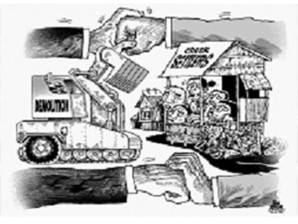If one were to ask former Cebu City administrator Francisco Fernandez, the legal battle between Cebu City Mayor Michael Rama and the Mahiga Creek settlers would have been avoided had there been a dialogue among the two parties.
Fernandez, who heads the Pagtambayayong Foundation that represents eight settlers in the dispute, said if given time and the proper encouragement the families would have accepted the city government’s offer of a relocation site.
“The City Hall lawyers didn’t know about this. The families were willing to relocate, they just needed a little push. If pushed, they will transfer. The city government didn’t know how to handle it,” Fernandez said.
Last week’s court hearing on a petition for a temporary restraining order (TRO) against the clearing operations resulted in a conference with Cebu Archbishop Jose Palma, who agreed to dialogue with Rama on behalf of the settlers.
The mayor was amenable to the dialogue, though he wondered why the settlers are using so many people in their campaign to remain in the creek when he and other officials already face a pending case in court.
The important thing is that outside of the court, the two parties are still willing to talk things out. Palma may be the voice of reason needed to calm the flaring tempers between Rama and Osmeña and his allies.
For while it is the settlers that are most affected by the clearing operations, the dispute has been overtaken by the ongoing political feud between the former mayor turned congressman and his successor.
The verbal tirades unloaded by Osmeña and his allies have seemingly antagonized Rama, who like it or not, remains the city mayor and thus wields executive authority to order the resumption or suspension of clearing operations in the creek.
It remains to be seen whether Palma would somehow manage to extract a solid pledge from Rama to discontinue the demolition pending the relocation of the displaced families in a suitable site.
Already the families have the familiar list of complaints about the temporary relocation site provided to them by City Hall in block 27, North Reclamation Area (NRA)—absence of adequate lighting and water, portable toilets instead of permanent toilets which they preferred—which makes one wonder whether they wanted the temporary relocation site to become a permanent one since it’s close to their place of livelihood.
At this point, both parties should agree to two things which should be carried out: that no houses should continue to stand in the creek to free it from garbage that would clog the flow of water to the sea and that a suitable relocation site be provided for the families.
In between all sides in the dispute would do well to temper their language and strive to work on achieving both goals for the mutual benefit of the settlers and the city.
